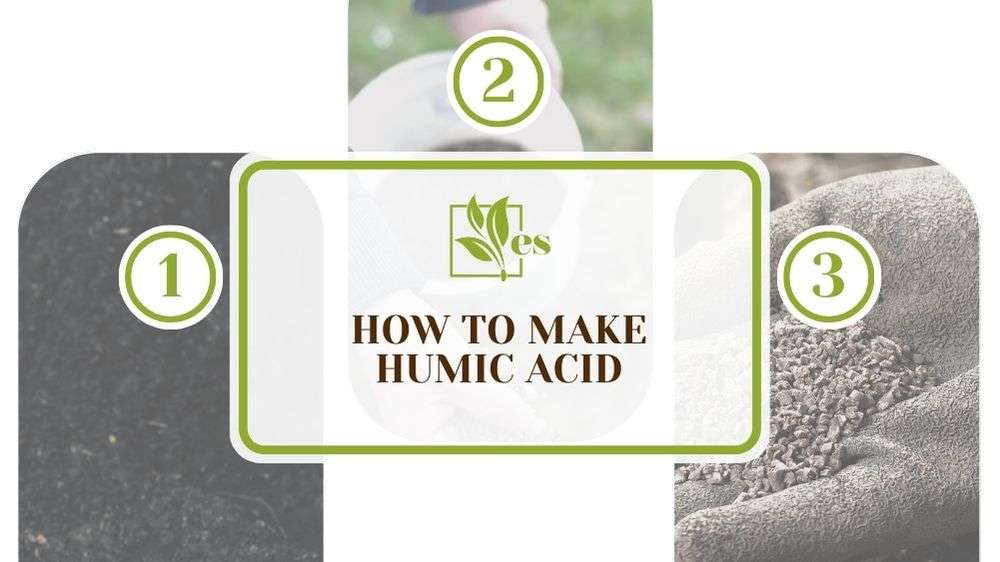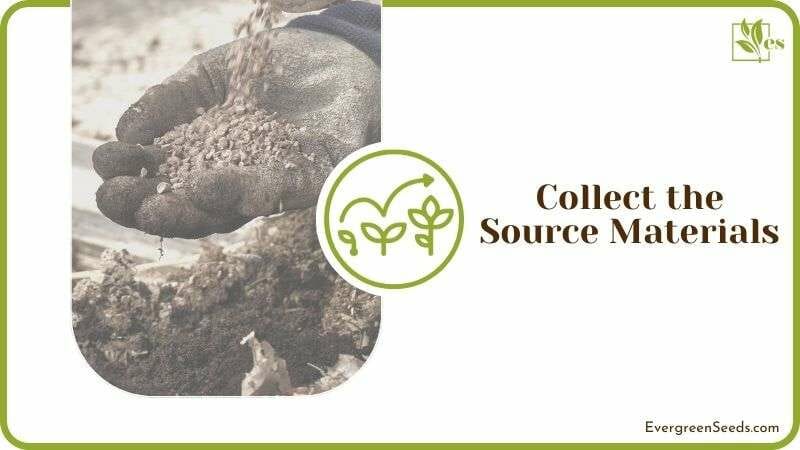“How to make humic acid?” is a question many gardeners and farmers have, as humic acid is essential for healthy plant growth and soil quality, especially for plants that love acidic soil. In this article, we will explore simple ways to make humic acid at home using organic materials such as compost, manure, and peat moss.

These methods are easy to execute and can help you improve the quality of your soil, increase crop yields, and promote overall plant health. In the case of blueberries, it is highly recommended to prepare the soil before planting them. Read our guide below!
JUMP TO TOPIC
How To Easily Make Humic Acid at Home?
To easily make humic acid at home, you need to collect the source materials, carry out the extraction process, the neutralization process, and the precipitation process, and then dry up and store the acid to be used to boost plant growth in your garden.
1. Collect the Source Materials
Collecting the source material is the first step. The source materials for humic acid production include compost, peat, coal, and leonardite, and each has unique characteristics that can affect the quality of the resulting product.

It’s important that you collect source materials that are free from toxins such as heavy metals, pesticides, or other chemicals that can impact the quality and purity of the acid. You must collect enough source material to produce the desired amount of acid. The amount required will depend on the extraction method, the quality of the source material, and the desired end-use.
Lastly, make sure to use source materials that are sustainable and environmentally friendly, like compost or other organic waste materials that can help reduce waste and improve soil health. Only use renewable sources, and avoid materials such as coal, unless other options are unavailable.
Are you wondering, “How to make humic acid from coal at home?” To make humic acid from coal, you need to use the alkaline extraction method. This involves crushing the coal and treating it with an alkaline solution, followed by neutralization with an acid. The resulting humic acid is then filtered, washed, and dried to create a fine powder.
While handling source materials, put safety first and put on safety gear like gloves and a mask to avoid breathing in dust or coming into touch with dangerous compounds. Store materials in a safe and secure location to prevent spills or accidents.
2. Extraction
The extraction process of humic acid is a critical step in production as it determines its purity and concentration. There are several methods for extracting humic acid, including the acid-base extraction method and the alkali fusion method, and each has its unique advantages and disadvantages.
An important part of the extraction process is optimizing extraction conditions such as temperature, pH, and extraction time, which can affect the yield and quality of the extracted acid. It is important to optimize these conditions to ensure maximum yield and purity.
After extraction, the solution should be filtered to remove impurities or particulate matter. The filtered solution can then be concentrated by evaporation or other means to increase the acid concentration.
Testing the extracted acid for purity is also important to ensure it meets the necessary quality standards. This can include testing for pH, ash content, and other chemical parameters. Lastly, store extracted humic acid in a cool and dry place away from direct sunshine to prevent degradation. Keep the product sealed and labeled to avoid confusion or cross-contamination.
3. Neutralization
Neutralization is the next and very critical step in the production of humic acid. It would be best if you choose the right neutralizing agent. We recommend sodium hydroxide, the most commonly used neutralizing agent in humic extraction. It is important to select a high-quality and pure sodium hydroxide source to ensure the final product’s purity.

Furthermore, when carrying out the process, the pH level of the solution should be closely monitored. The target pH level for acid extraction is typically between 7 and 8. Neutralization conditions such as temperature and reaction time can also affect the yield and quality of the extracted product.
After neutralization, the solution should be filtered to remove any impurities or particulate matter. The filtered solution can then be concentrated by evaporation or other means to increase the acid concentration.
4. Precipitation
Precipitation is an important step in the production of acid. We recommend using aluminum sulfate, commonly used as the precipitating agent in humic acid production. The pH level of the solution should be closely monitored during the precipitation process, keeping the target pH level for acid extraction between 2 and 3.
It is also important to optimize these conditions to ensure maximum yield and purity, as precipitation conditions such as temperature and reaction time can affect the yield and quality of the extracted acid.
After precipitation, the solution should be filtered to remove any impurities or precipitate. The residue should then be washed to remove contaminants and dried and ground to produce a fine powder. This powder can then be used as an organic fertilizer supplement or for other industrial applications.
Read more about acid related topics:
“Are Gardenias Acid-Loving Plants? 7 Ways To Increase Acidity”
“How To Lower Soil pH in Potted Plants”
“pH Up and Down for Soil: The Ultimate Guide to Solutions”












